About Colorado Water Plan
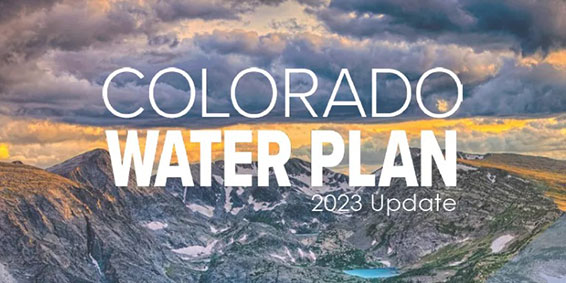
Introduction
Colorado’s water touches every aspect of our daily lives, and it is facing unprecedented challenges that require all Coloradans to embrace a new water ethic. We must come together to protect this critical resource in increasingly innovative ways. The time for action is now.
As a headwaters state, water flows from snow-capped peaks, through forests and streams, to cities and farms, and then returns to streams. Along the way, water supports habitat, wildlife, recreation, local food production, energy, industry, drinking water supplies, and more. Water connects us all. As the Tribal Nations that have historically lived in Colorado and the two federally recognized Tribes of Colorado often say, “Water is life.”
Nearly 6 million Coloradans depend on the water from our major river basins as do 19 other states and Mexico, but that water supply is at risk. Population growth, long-term warming trends, major wildfires, and multiyear droughts are straining the system like never before.
Water Plan Process & Background
The Water Plan is produced through a 3-step process that takes several years and requires substantial engagement with stakeholders. The image to the right is explained in the text below.
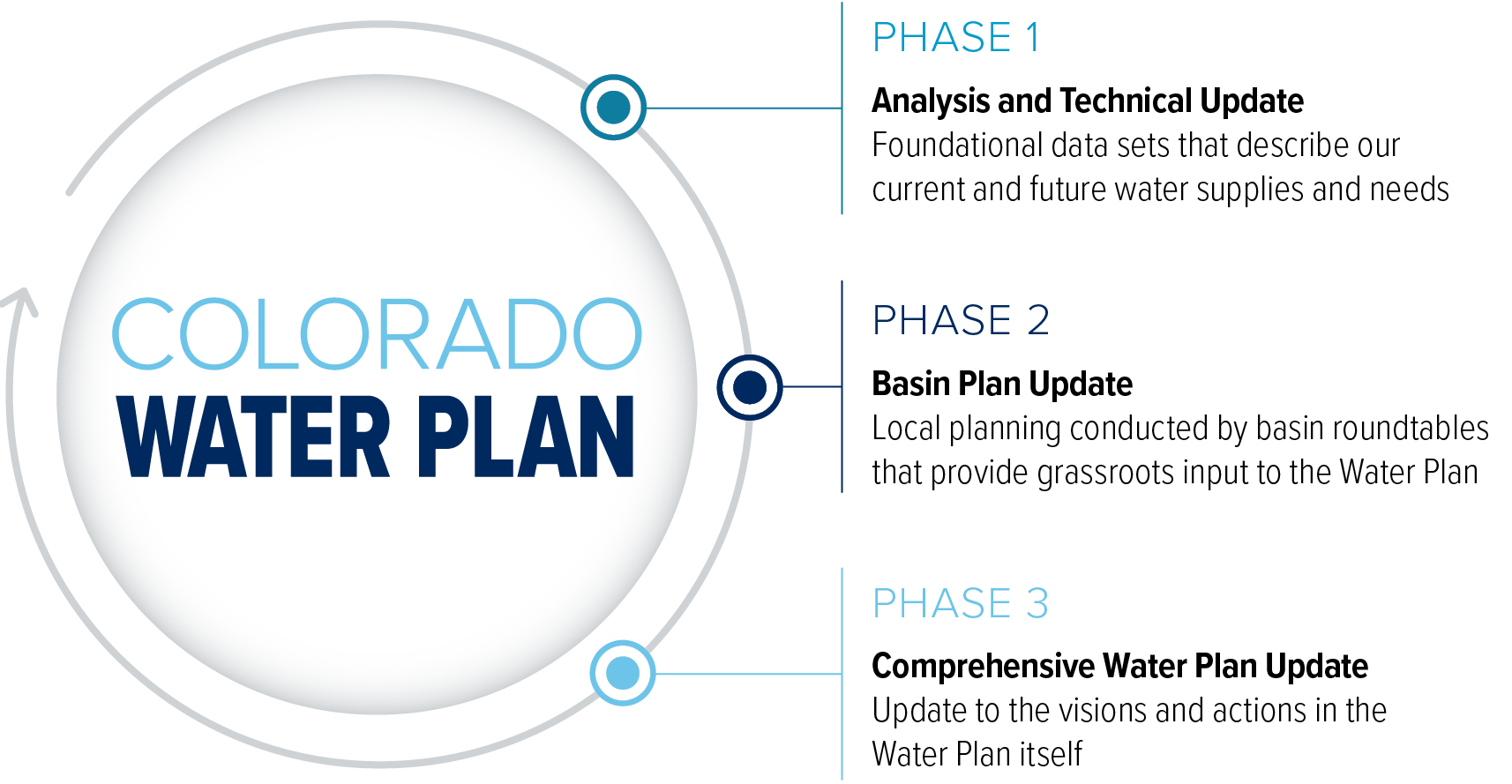 Phase 1- Analysis and Technical Update
Phase 1- Analysis and Technical Update
An array of foundational data sets that describe our current and future water supplies and needs are compiled. This was finalized in 2019.
Phase 2- Basin Implementation Plans
Eight smaller, tailored water plans for each major river basin in Colorado are reviewed and updated. These were completed in January 2022.
Phase 3 - Comprehensive Update to the Water Plan
The Water Plan is updated roughly every ten years. The visions and actions within the plan are reviewed and updated and new information is included from the Analysis and Technical Update, and the Basin Implementation Plans.
About Colorado Water Plan
The first Colorado Water Plan was released in 2015 at the direction of then-Governor John Hickenlooper to serve as the state's framework for solutions to the state's water challenges. An update to the Colorado Water Plan occurred in 2023. The Colorado Water Plan is described as “a framework for statewide collaboration around water planning. The Colorado Water Plan guides future decision-making and supports local actions to address water challenges with a collaborative, balanced, and solution-oriented approach that builds resilience.
Actions in the plan categorized in four main focus areas:

Colorado Water Plans and Support Materials
Use the following tabbed information to explore the Colorado Water Plan.
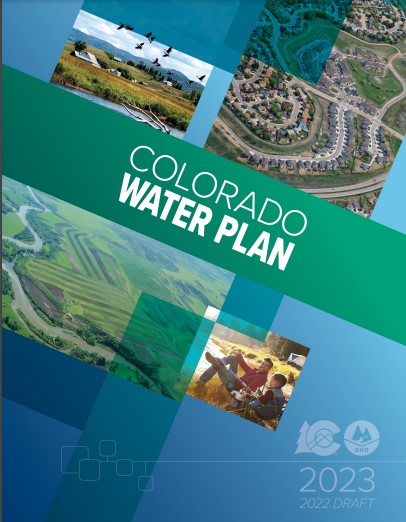 The 2023 Colorado Water Plan was adopted by the Colorado Water Conservation Board in January 2023 and serves as a framework for statewide collaboration around water planning. The Colorado Water Plan guides future decision-making and supports local actions to address water challenges with a collaborative, balanced, and solution-oriented approach that builds resilience. The Colorado Water Plan includes actions in four main focus areas that work together for a stronger state: Vibrant Communities, Robust Agriculture, Thriving Watersheds, and Resilient Planning.
The 2023 Colorado Water Plan was adopted by the Colorado Water Conservation Board in January 2023 and serves as a framework for statewide collaboration around water planning. The Colorado Water Plan guides future decision-making and supports local actions to address water challenges with a collaborative, balanced, and solution-oriented approach that builds resilience. The Colorado Water Plan includes actions in four main focus areas that work together for a stronger state: Vibrant Communities, Robust Agriculture, Thriving Watersheds, and Resilient Planning.
Colorado Water Plan - Planning Scenarios
Colorado’s Water Plan (CWP) describes scenario planning as a strategic foresight planning process that acknowledges the future is uncertain. CWP enlists scenario planning to consider a wide range of possible futures according to the best available science and stakeholder input. The approach embraces inherent uncertainties in future climate conditions, social conditions (such as values and economics), and supply-demand conditions (e.g., energy, agricultural, and municipal needs). (TU, 2017, Volume 1-Section 2 Methodologies, pg 7)
Scenario planning and adaptive management allow decision makers and water users the flexibility to track environmental and social changes over time that provide insights into which future conditions might become more likely as time passes. The scenario planning method varies from a more simplistic application of high, medium, and low stress conditions (used in SWSI 2010) by acknowledging that the future holds a degree of uncertainty, depending on a variety of environmental and social drivers. (TU, 2017, Volume 1-Section 2 Methodologies, pg 7)
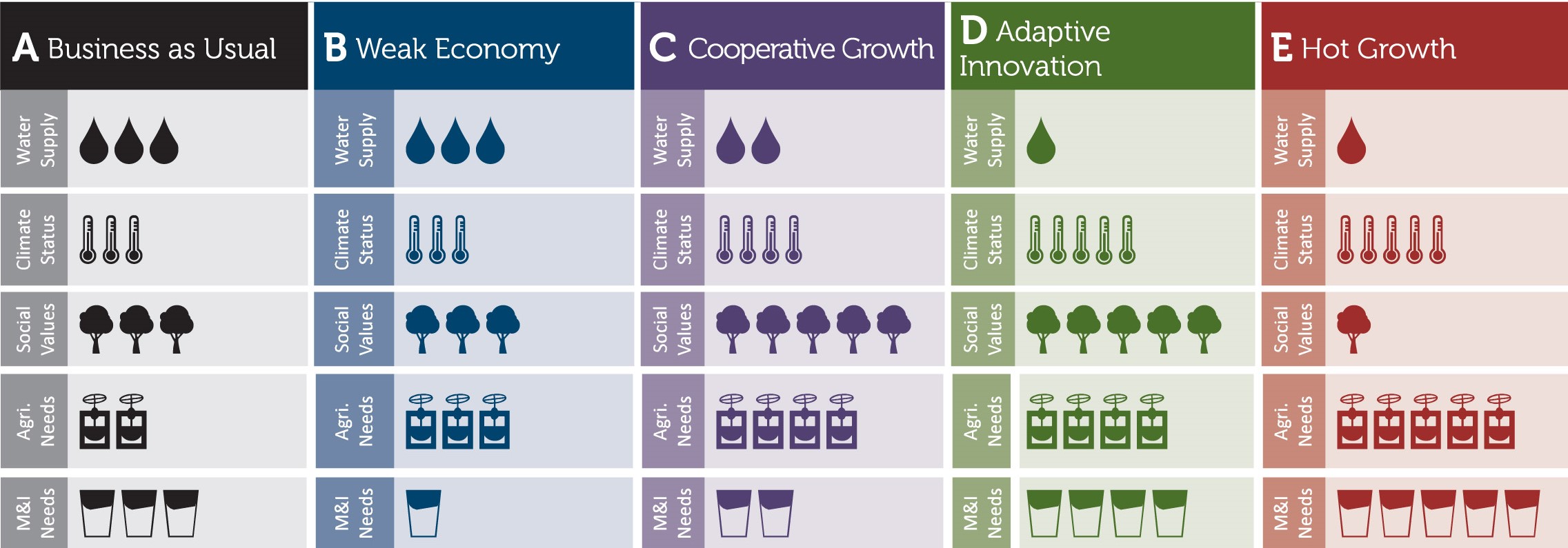
Scenario A: Business As Usual
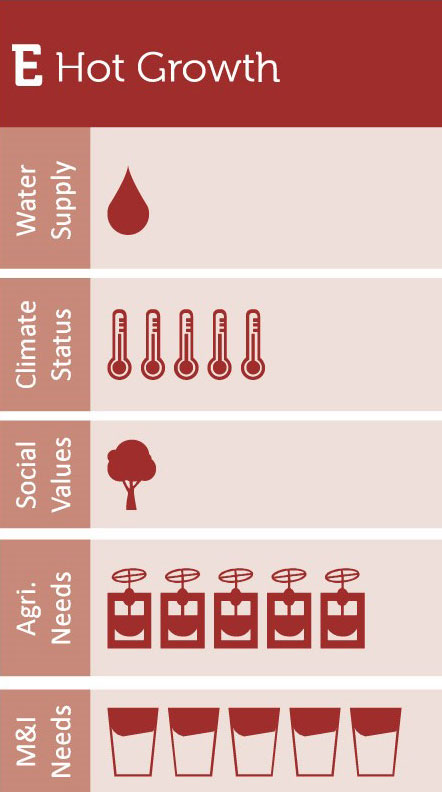 Recent trends continue into the future. Few unanticipated events occur. The economy goes through regular economic cycles but grows over time. By 2050, Colorado’s population is close to 9 million people. Single family homes dominate, but there is a slow increase of denser developments in large urban areas. Social values and regulations remain the same, but streamflow and water supplies show increased stress. Regulations are not well coordinated and create increasing uncertainty for local planners and water managers. Willingness to pay for social and environmental mitigation of new water development slowly increases. Municipal water conservation efforts slowly increase. Oil-shale development continues to be researched as an option. Large portions of agricultural land around cities are developed by 2050. Transfer of water from agriculture to urban uses continues. Efforts to mitigate the effects of the transfers slowly increase. Agricultural economics continue to be viable, but agricultural water use continues to decline. The climate is similar to the observed conditions of the 20th century.
Recent trends continue into the future. Few unanticipated events occur. The economy goes through regular economic cycles but grows over time. By 2050, Colorado’s population is close to 9 million people. Single family homes dominate, but there is a slow increase of denser developments in large urban areas. Social values and regulations remain the same, but streamflow and water supplies show increased stress. Regulations are not well coordinated and create increasing uncertainty for local planners and water managers. Willingness to pay for social and environmental mitigation of new water development slowly increases. Municipal water conservation efforts slowly increase. Oil-shale development continues to be researched as an option. Large portions of agricultural land around cities are developed by 2050. Transfer of water from agriculture to urban uses continues. Efforts to mitigate the effects of the transfers slowly increase. Agricultural economics continue to be viable, but agricultural water use continues to decline. The climate is similar to the observed conditions of the 20th century.
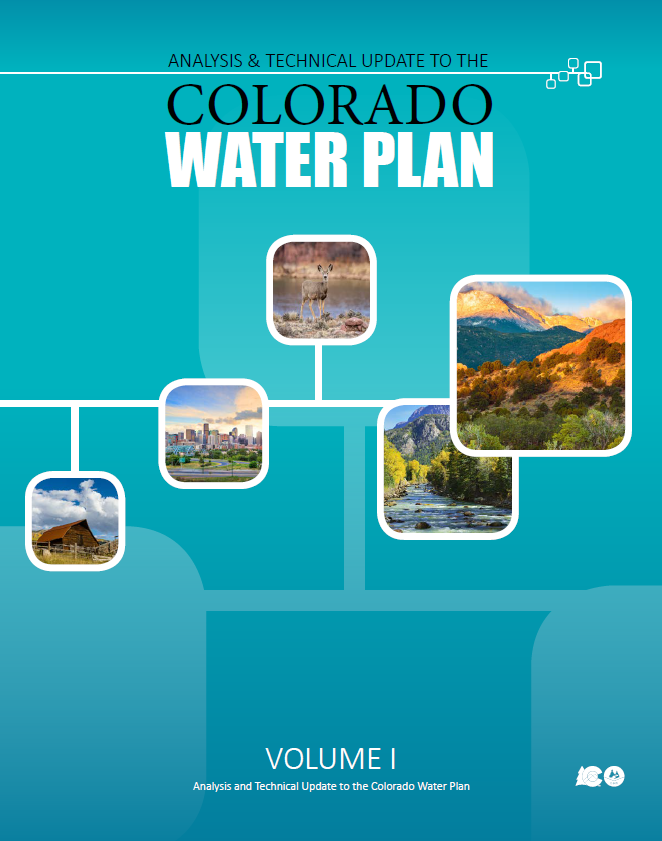
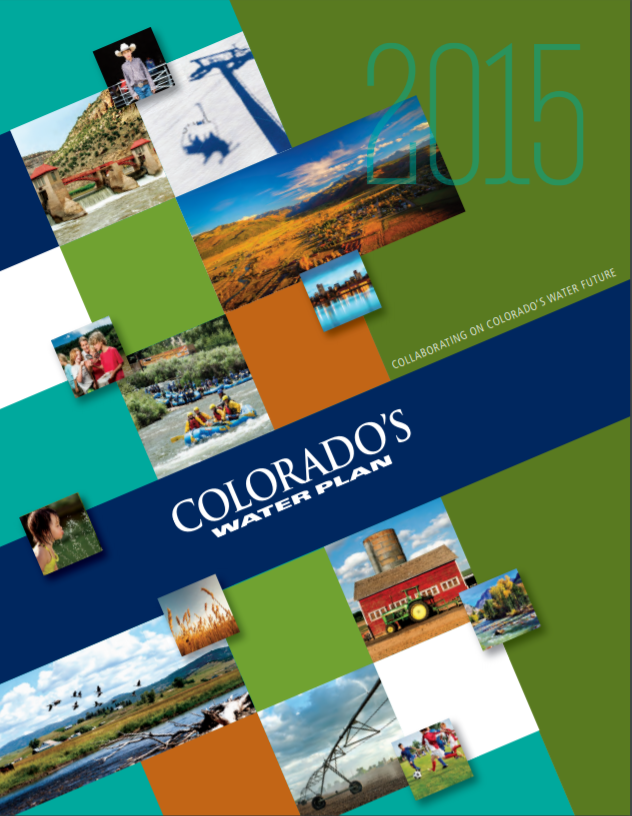
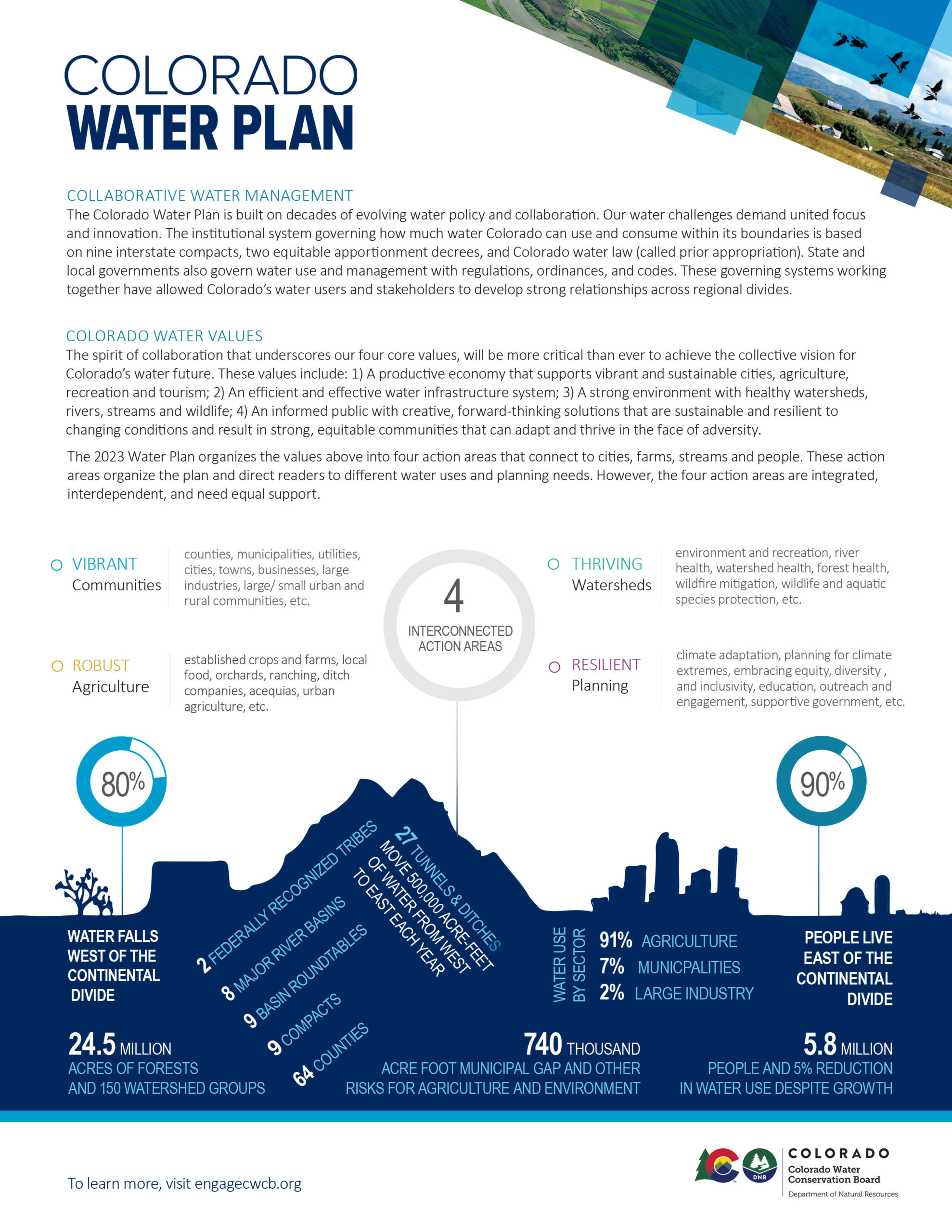
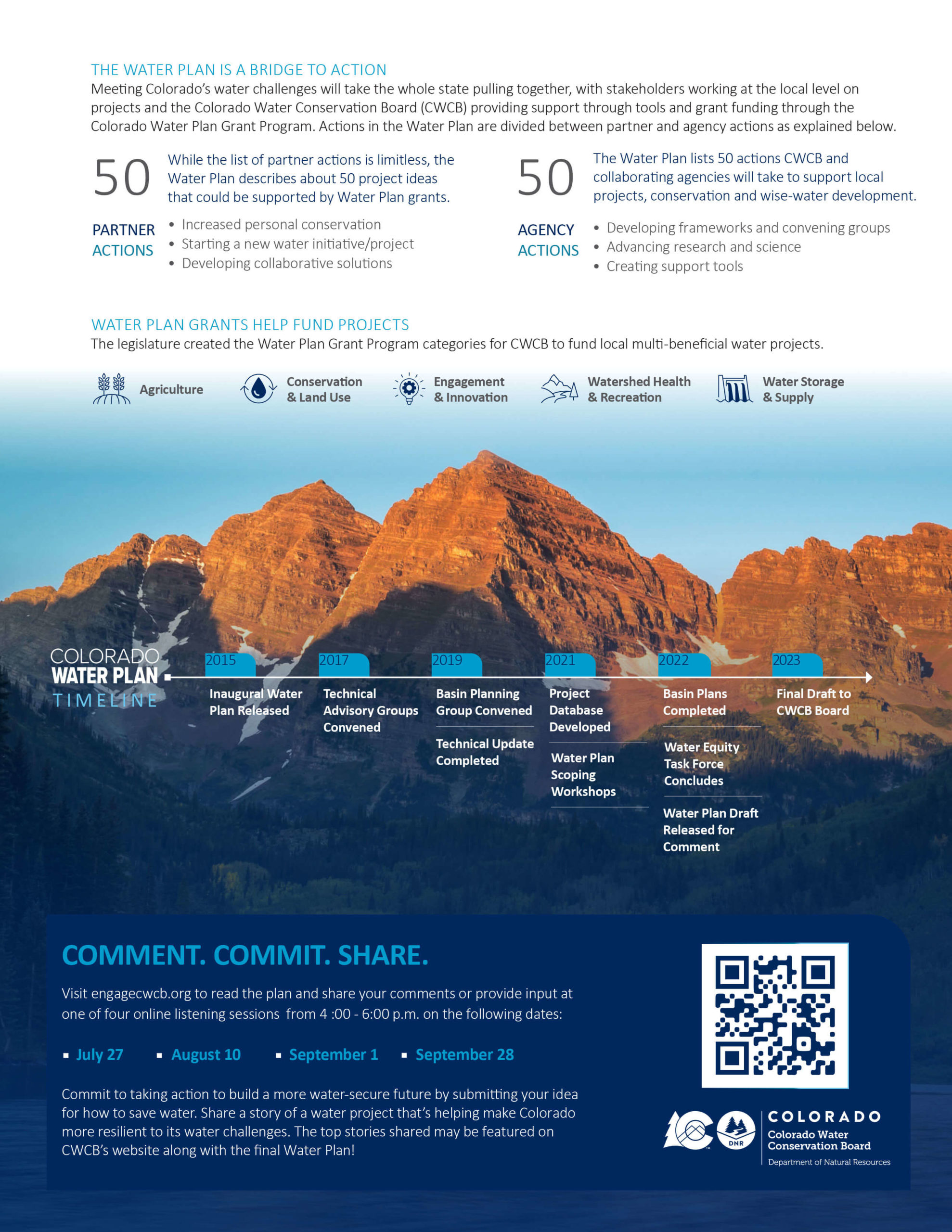
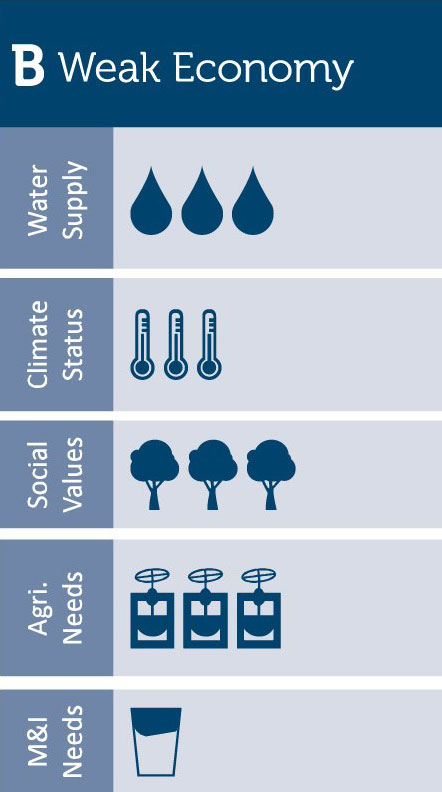 The world’s economy struggles, and the state’s economy is slow to improve. Population growth is lower than currently projected, which is slowing the conversion of agricultural land to housing. The maintenance of infrastructure, including water facilities, becomes difficult to fund. Many sectors of the State’s economy, including most water users and water-dependent businesses, begin to struggle financially. There is little change in social values, levels of water conservation, urban land use patterns, and environmental regulations. Regulations are not well coordinated and create increasing uncertainty for local planners and water managers. Willingness to pay for social and environmental mitigation decreases due to economic concerns. Greenhouse gas emissions do not grow as much as projected, and the climate is similar to the observed conditions of the 20th century.
The world’s economy struggles, and the state’s economy is slow to improve. Population growth is lower than currently projected, which is slowing the conversion of agricultural land to housing. The maintenance of infrastructure, including water facilities, becomes difficult to fund. Many sectors of the State’s economy, including most water users and water-dependent businesses, begin to struggle financially. There is little change in social values, levels of water conservation, urban land use patterns, and environmental regulations. Regulations are not well coordinated and create increasing uncertainty for local planners and water managers. Willingness to pay for social and environmental mitigation decreases due to economic concerns. Greenhouse gas emissions do not grow as much as projected, and the climate is similar to the observed conditions of the 20th century.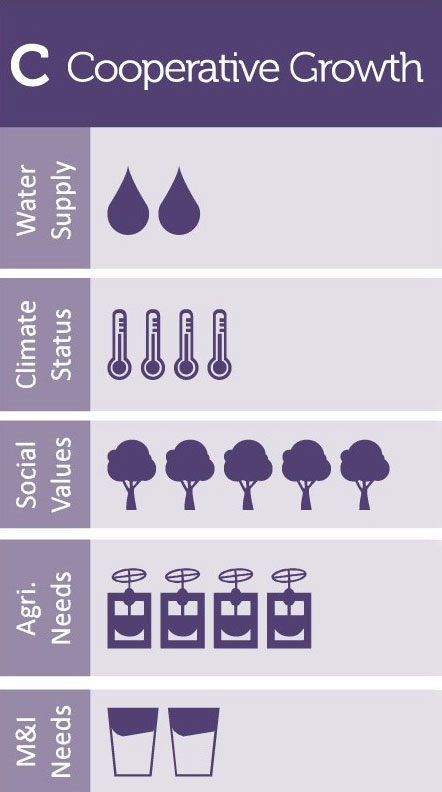 Environmental stewardship becomes the norm. Broad alliances form to provide for more integrated and efficient planning and development. Population growth is consistent with current forecasts. Mass transportation planning concentrates more development in urban centers and mountain resort communities, thereby slowing the loss of agricultural land and reducing the strain on natural resources compared to traditional development. Coloradans embrace water and energy conservation. New water-saving technologies emerge. Ecotourism thrives. Water-development controls are more restrictive and require both high water-use efficiency and environmental and recreation benefits. Environmental regulations are more protective and include efforts to reoperate water supply projects to reduce effects. Demand for more water-efficient foods reduces water use. There is a moderate warming of the climate, which results in increased water use in all sectors and in turn, affects streamflow and supplies. This dynamic reinforces the social value of widespread water efficiency and increased environmental protection.
Environmental stewardship becomes the norm. Broad alliances form to provide for more integrated and efficient planning and development. Population growth is consistent with current forecasts. Mass transportation planning concentrates more development in urban centers and mountain resort communities, thereby slowing the loss of agricultural land and reducing the strain on natural resources compared to traditional development. Coloradans embrace water and energy conservation. New water-saving technologies emerge. Ecotourism thrives. Water-development controls are more restrictive and require both high water-use efficiency and environmental and recreation benefits. Environmental regulations are more protective and include efforts to reoperate water supply projects to reduce effects. Demand for more water-efficient foods reduces water use. There is a moderate warming of the climate, which results in increased water use in all sectors and in turn, affects streamflow and supplies. This dynamic reinforces the social value of widespread water efficiency and increased environmental protection.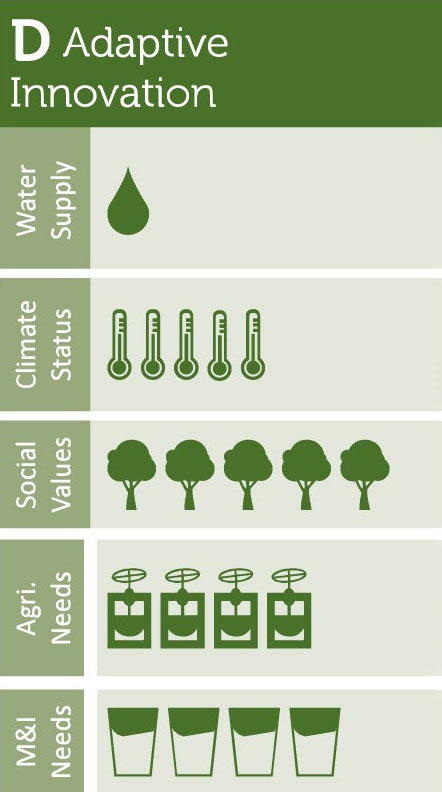 A much warmer climate causes major environmental problems globally and locally. Social attitudes shift to a shared responsibility to address problems. Technological innovation becomes the dominant solution. Strong investments in research lead to breakthrough efficiencies in the use of natural resources, including water. Renewable and clean energy become dominant. Colorado is a research hub and has a strong economy. The relatively cooler weather in Colorado (due to its higher elevation) and the high-tech job market cause population to grow faster than currently projected. The warmer climate increases demand for irrigation water in agriculture and municipal uses, but innovative technology mitigates the increased demand. The warmer climate reduces global food production, which increases the market for local agriculture and food imports to Colorado. More food is bought locally, which increases local food prices and reduces the loss of agricultural land to urban development. Higher water efficiency helps maintain streamflow, even as water supplies decline. The regulations are well defined, and permitting outcomes are predictable and expedited. The environment declines and shifts to becoming habitat for warmer-weather species. Droughts and floods become more extreme. More compact urban development occurs through innovations in mass transit.
A much warmer climate causes major environmental problems globally and locally. Social attitudes shift to a shared responsibility to address problems. Technological innovation becomes the dominant solution. Strong investments in research lead to breakthrough efficiencies in the use of natural resources, including water. Renewable and clean energy become dominant. Colorado is a research hub and has a strong economy. The relatively cooler weather in Colorado (due to its higher elevation) and the high-tech job market cause population to grow faster than currently projected. The warmer climate increases demand for irrigation water in agriculture and municipal uses, but innovative technology mitigates the increased demand. The warmer climate reduces global food production, which increases the market for local agriculture and food imports to Colorado. More food is bought locally, which increases local food prices and reduces the loss of agricultural land to urban development. Higher water efficiency helps maintain streamflow, even as water supplies decline. The regulations are well defined, and permitting outcomes are predictable and expedited. The environment declines and shifts to becoming habitat for warmer-weather species. Droughts and floods become more extreme. More compact urban development occurs through innovations in mass transit.